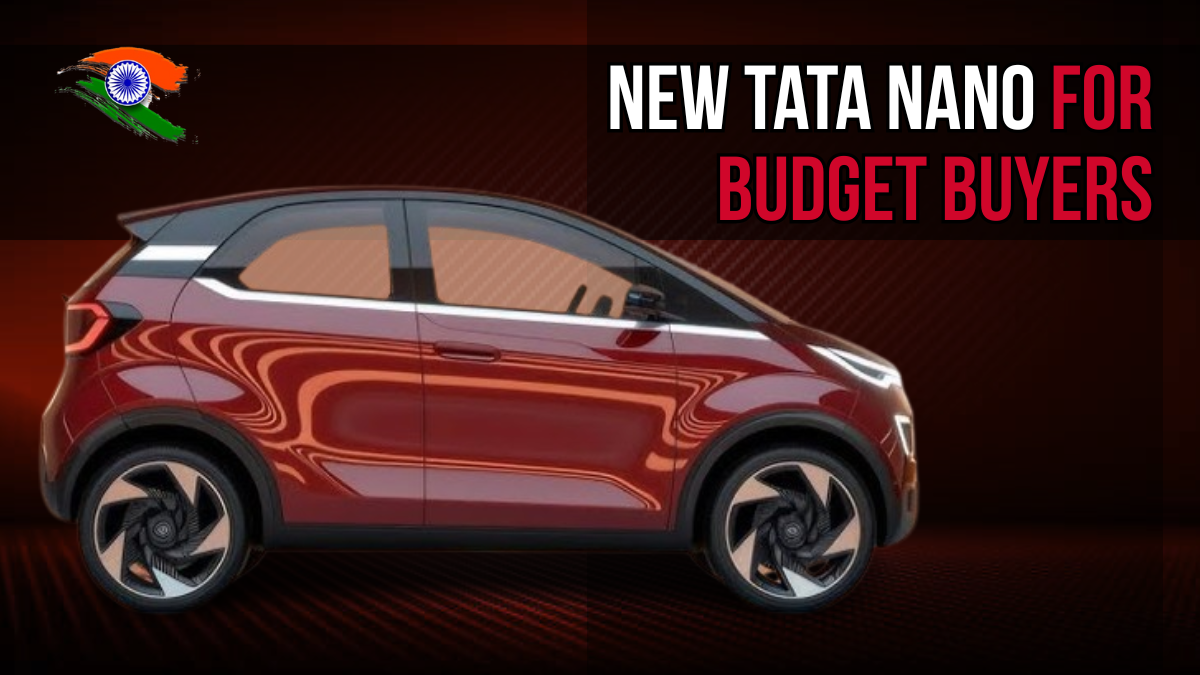The Tata Nano, once celebrated as the world’s most affordable car, is poised for a remarkable comeback in 2025 as an electric vehicle (EV). This transformation aligns with India’s push towards sustainable mobility, offering a budget-friendly EV option for small families and urban commuters.

Overview of the New Tata Nano EV
| Feature | Details |
|---|---|
| Manufacturer | Tata Motors |
| Expected Launch | Late 2025 (unconfirmed) |
| Estimated Price | ₹4–6 lakh (ex-showroom) |
| Battery Capacity | 15.5 kWh to 40 kWh (depending on variant) |
| Range per Charge | 150–300 km |
| Charging Time | Fast charging: ~1 hour; Standard charging: 5–6 hours |
| Seating Capacity | 4 adults |
| Safety Features | Dual airbags, ABS with EBD, rear parking sensors |
| Interior Features | Touchscreen infotainment, power windows, air conditioning, digital cluster |
| Official Website | Tata Motors |
The Legacy of Tata Nano: A Brief Recap
Launched in 2008, the original Tata Nano was envisioned as the “people’s car,” aiming to provide an affordable four-wheeler to Indian families. Priced around ₹1 lakh, it featured a 624cc engine, seating for four, and basic amenities. Despite its innovative approach, the Nano faced challenges, including safety concerns and market perception issues, leading to its discontinuation in 2018.
Reimagining the Nano: Transition to Electric
In response to the growing demand for eco-friendly transportation, Tata Motors is reintroducing the Nano as an electric vehicle. This move not only revitalizes the iconic model but also contributes to India’s electric mobility goals.
Key Enhancements in the Electric Avatar
- Electric Powertrain: Equipped with a lithium-ion battery, the Nano EV offers a range suitable for daily commutes.
- Modern Features: Inclusion of touchscreen infotainment systems, air conditioning, and power windows enhances user comfort.
- Safety Upgrades: The EV variant addresses previous safety concerns with features like dual airbags and ABS.
Performance and Efficiency
The Nano EV is designed for urban environments, offering:
- Range: Between 150 to 300 km on a single charge, depending on the battery variant.
- Charging: Fast-charging capabilities allow for an 80% charge in approximately one hour.
- Driving Experience: The compact size and improved torque provide a nimble driving experience in city traffic.
Market Positioning and Competition
Positioned as an affordable EV, the Nano will compete with models like:
- MG Comet EV: Offers a range of 230 km and is priced between ₹6.99 lakh and ₹9.14 lakh.
- Tata Tiago EV: Priced from ₹7.99 lakh, it offers a range of up to 250 km.
The Nano EV aims to undercut these models in price while offering comparable features, making it an attractive option for budget-conscious consumers.
Environmental Impact
Transitioning the Nano to an electric vehicle aligns with global sustainability efforts:
- Zero Emissions: As an EV, the Nano produces no tailpipe emissions, contributing to cleaner air in urban areas.
- Energy Efficiency: Electric motors are more efficient than internal combustion engines, reducing overall energy consumption.
Challenges and Considerations
While the Nano EV presents numerous advantages, certain challenges persist:
- Infrastructure: The availability of charging stations remains a concern, especially in semi-urban and rural areas.
- Consumer Perception: Overcoming the “cheap car” stigma associated with the original Nano is crucial for market acceptance.
- Production Costs: Balancing affordability with quality and safety features requires careful cost management.
Frequently Asked Questions (FAQs)
Q1: What is the expected price of the Tata Nano EV?
A: The Nano EV is anticipated to be priced between ₹4 to ₹6 lakh (ex-showroom), making it one of the most affordable electric cars in India.
Q2: When will the Tata Nano EV be launched?
A: While Tata Motors has not announced an official launch date, industry reports suggest a potential release in late 2025.
Q3: What is the driving range of the Nano EV on a single charge?
A: Depending on the battery variant, the Nano EV is expected to offer a range between 150 to 300 km per charge.
Q4: What safety features will the Nano EV include?
A: The vehicle is likely to come equipped with dual airbags, ABS with EBD, rear parking sensors, and a reinforced body structure.
Q5: Will the Nano EV support fast charging?
A: Yes, the Nano EV is expected to support fast charging, allowing for an 80% charge in approximately one hour.
Conclusion
The Tata Nano’s evolution into an electric vehicle represents a significant step in making sustainable transportation accessible to a broader audience. By addressing past shortcomings and incorporating modern features, the Nano EV has the potential to redefine urban mobility in India.
For more information, visit the Tata Motors Official Website.
Click here to know more



